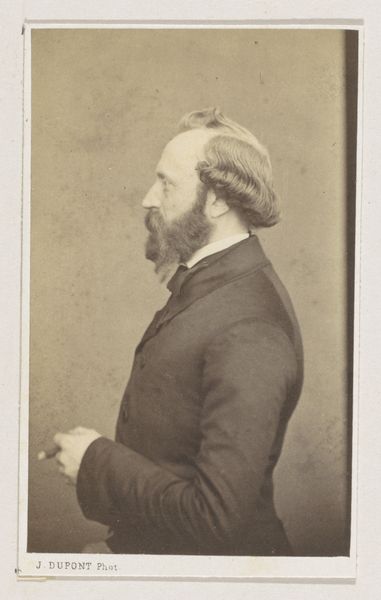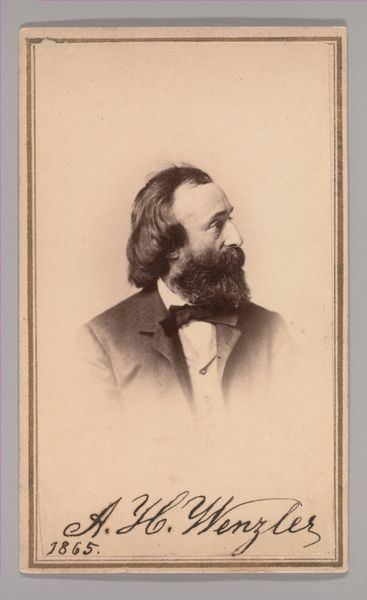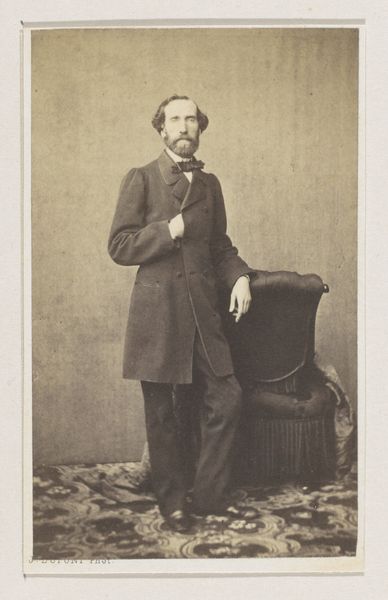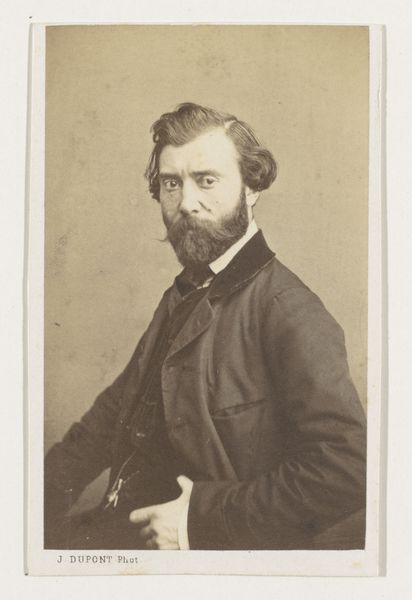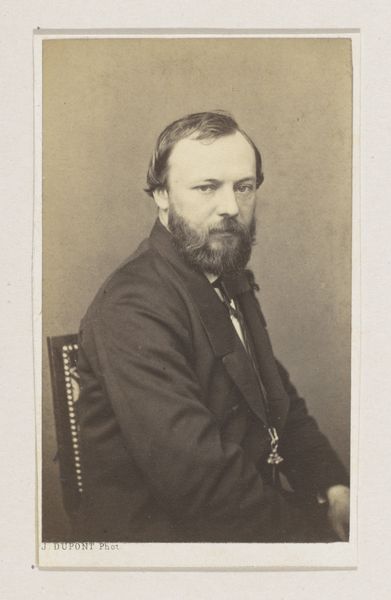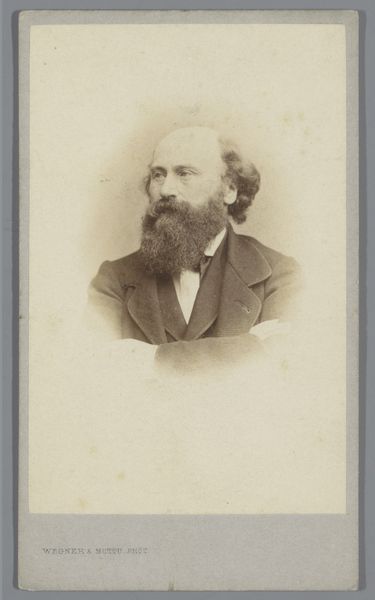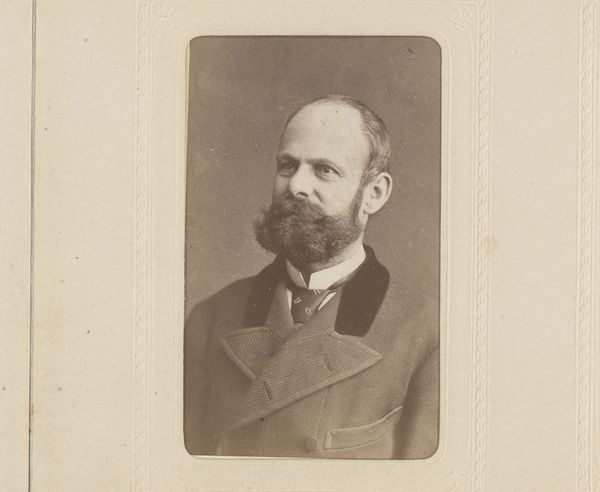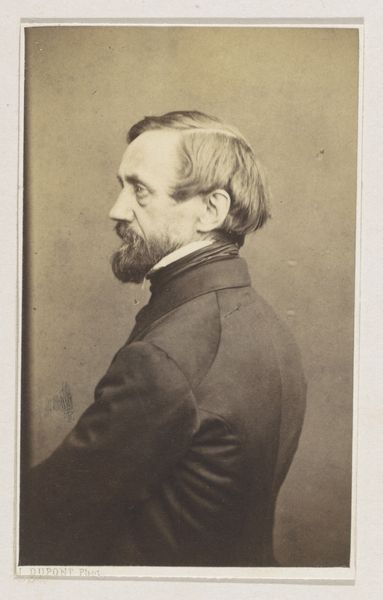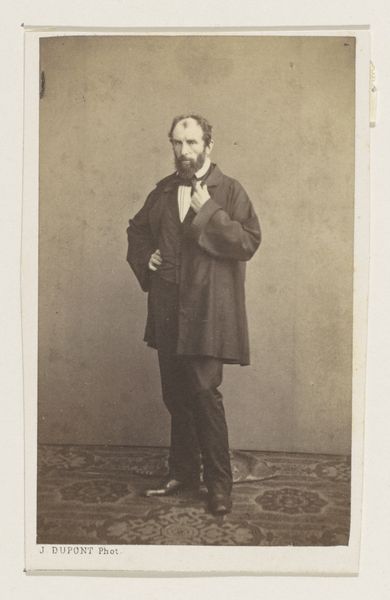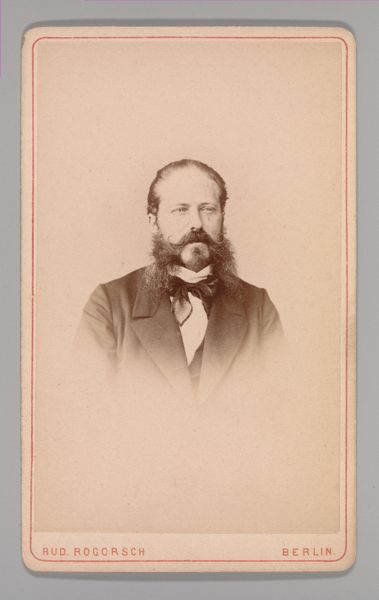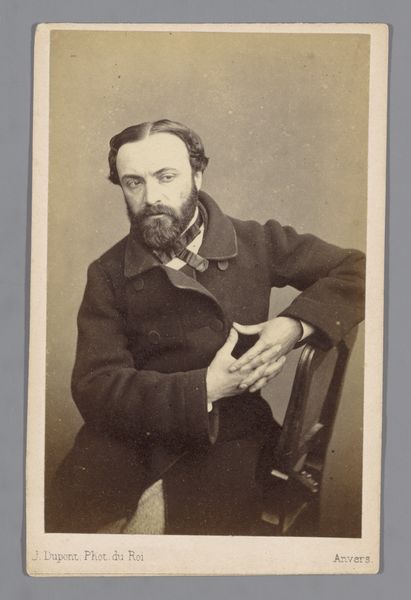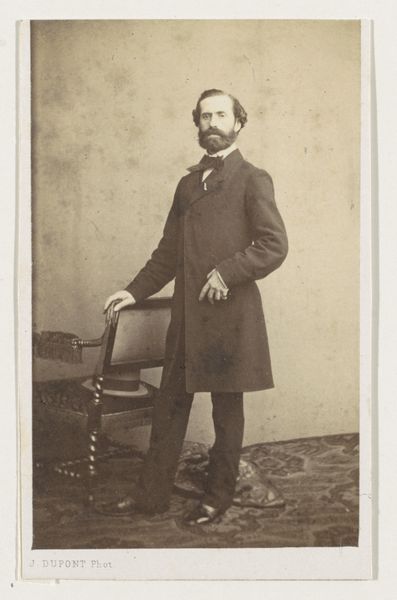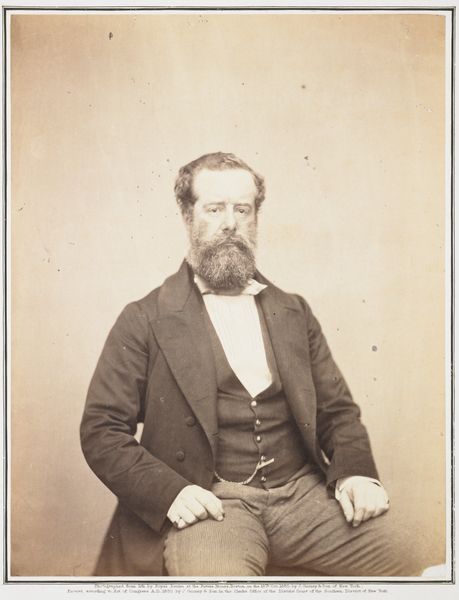
photography, gelatin-silver-print
#
portrait
#
16_19th-century
#
photography
#
gelatin-silver-print
#
realism
Dimensions: height 102 mm, width 62 mm
Copyright: Rijks Museum: Open Domain
Editor: This is a photograph from 1861 by Joseph Dupont, "Portret van de schilder Nicaise de Keyser, halffiguur", which translates to "Portrait of the painter Nicaise de Keyser, half-figure". The sepia tones give it such a weighty, serious atmosphere, don't you think? It feels like a window into a very different time. What strikes you most about it? Curator: You know, it’s funny – sepia makes us think “serious,” doesn't it? But look closer. Notice the man's posture, almost like he's bracing himself. I see someone contemplative, but also quite vulnerable. Almost caught off-guard. Dupont was quite the observant photographer to capture such rawness. It also hints at the power and status afforded to painters like de Keyser during the era. Doesn't it make you wonder about their interactions? What do you make of that gaze? Editor: He definitely looks like he's caught in a moment of deep thought. Perhaps Dupont interrupted his reverie? Also, painters had 'rockstar' status at the time? How come? Curator: Well, to have your portrait taken then signified prosperity and status; the opposite might be said today, when we freely snap photos with our camera phones. The rising middle class desired their portraits done just as much as nobility or landed gentry had for centuries previously, but perhaps sought different artists! Is there something about the image that speaks to your idea of 'realism', a defining aspect of its style? Editor: Hmm, you're right. Maybe the seriousness isn't just the sepia, but the direct, unflinching gaze. In that sense, it feels incredibly realistic - a capturing of a moment rather than an idealized depiction. Thanks for pointing that out. Now I see this photograph less as a relic, and more like a stolen moment. Curator: Precisely. It's these little visual clues that open a photograph up like a hidden diary. Glad to have shared that little visual treasure hunt with you!
Comments
No comments
Be the first to comment and join the conversation on the ultimate creative platform.
